Showing 277–288 of 383 results

The book unveils the ancient Indian society in all its variegated evolutionary expressions across 2500 years to explore the sociological orientations of the Vedic Samhitas, Brahmanas, Upanisads and other Sanskrit works besides Buddhist and Jaina works.
It is a fascinating, meticulously documented study unveiling, for the first time, the ancient Indian society in all its variegated evolutionary expressions across about two-and-a-half millennia: since the Vedic times (c. 1500 BC) with a beautifully well-knit account of its religions and cultic practices; economic paradigms; polity and statecraft; educational set-up; customes, manners, etiquettes; food habits, drinks, dress styles; sports, pastimes, modes of recreations; sex life and sexual morality; casteist hierarchies; attitude towards women; and its crimes, punishments and legal codes. Epitomising a lifetime of Dr. Banerjis research on ancient India, the book vividly captures all different articulations of sociological import from a whole body of traditional writings: both sacred and secular. Again, it turns out to be the first ever study to singly explore the sociological orientations of the Vedic Samhitas, Brahmanas, Upanishads, Kalpasutras, Vyakaranas, Puranas, Smritishastras, Tantric texts, the Ramayana, the Mahabharata, Kautilyas Arthashastra, and many other Sanskrit classics besides Buddhist and Jaina works in Pali, Prakrit and Apabhramsha languages. With highly informative appendices, extensive bibliographic references and a glossary of technical/unfamiliar words, the book holds out enduring appeal to both scholars and discerning readers.
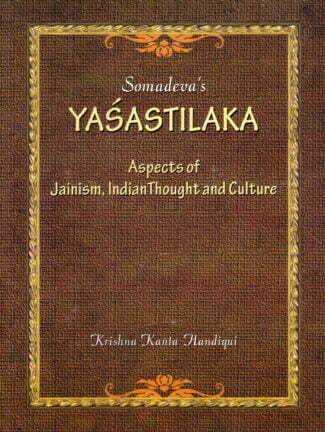
This book is notable as an encyclopaedic record of literary, socio-political, religious and philosophical data that throws light on the cultural history of the Deccan in early medieval India. It discusses Somadeva, his age and gives a synopsis of Yashastilaka, throws light on Jaina dogmatics, religious poetry, moral and religious stories and myths and legends.
Yashastilaka by Somadeva, composed in ce 959, is a Jaina religious romance written in Sanskrit prose and verse. It is notable as an encyclopaedic record of literary, socio-political, religious and philosophical data that throws light on the cultural history of the Deccan in early medieval India. This volume presents a critical study of the work, providing a comprehensive picture of the life and thought of the time of Somadeva. It begins with a discussion on Somadeva and his age and gives a synopsis of Yashastilaka. it examines the Yashastilaka as a prose and a religious romance, a socio-political record and as an anthology of Sanskrit verse. The book discusses various philosophical doctrines in Indian thought. With many detailed references and footnotes, it reveals the Yashastilaka as a work that expounds the cardinal teachings of Jainism. It throws light on Jaina dogmatics, religious poetry, moral and religious stories, and myths and legends in the process of examining the work. The volume also has supplementary notes incorporating the results of studies on Somadevas relations with the Vemulavada Calukyas and the locality in which he wrote his masterpiece.
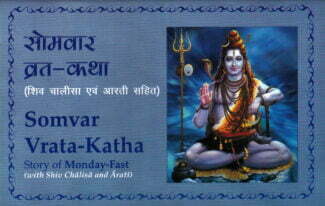
This book elaborates the glory of the story of ßSri Somavarû and meticulously details the nuances of Monday fasting in English and Hindi. Shiv Chalisa and Sri Shiv-Panchaksharastotram are also given.
This book elaborates the glory of the story of ßSri Somavarû and meticulously details the nuances of Monday fasting in English and Hindi. Shiv Chalisa and Sri Shiv-Panchaksharastotram are also given.

This volume encapsulates the advice of Krishna to Arjuna at the Mahabharata battlefield, through the poetic narration of Vedic seer Vasistha in Yoga-Vasistha, which is different from the traditional one found in Mahabharata. It melds together the wisdom of two great epics Bhagavad-Gita and Yoga-Vasistha providing unparalleled access to the great truths and insights of yoga and liberation.
Arjunas predicament of fighting and killing his own kinsmen and gurus in the Mahabharata War, and Lord Krishnas advice and thus the formers enlightenment are well known. Moving away from the traditional Mahabharata narration, Yoga-Vasishtha presents a different narrative approach by the Vedic seer, Vasishtha about the KrishnaArjuna dialogue to his pupil Rama as if it would happen eventually in the remote future.
While the Bhagavad-Gita accounts for Krishnas teaching of eighteen forms of yoga in 700 verses, Vasishtha narrates sixty stories in more than 28,000 verses, making Yoga-Vasishtha as one of the lengthier and most lyrical philosophical discourses in the world. In the course of the narrative, Vasishtha summarizes how to attain liberation, the essence of the Bhagavad-Gita, in seven chapters.
This lucid translation of Mokshopaya, a section of the Yoga-Vasishtha, encapsulates the message of Krishna, through the poetic narration of Vasishtha. Arjuna experiences the dissolution of his ignorance, overcomes his attachments and arrives at a point of freedom. The author, by choosing to highlight the story of Arjuna from two sources, has melded together the wisdom of two great epics Bhagavad-Gita and Yoga-Vasishtha providing the reader with unparalleled access to the great truths and insights of yoga and liberation.

This volume encapsulates the advice of Krishna to Arjuna at the Mahabharata battlefield, through the poetic narration of Vedic seer Vasistha in Yoga-Vasistha, which is different from the traditional one found in Mahabharata. It melds together the wisdom of two great epics Bhagavad-Gita and Yoga-Vasistha providing unparalleled access to the great truths and insights of yoga and liberation.
Arjunas predicament of fighting and killing his own kinsmen and gurus in the Mahabharata War, and Lord Krishnas advice and thus the formers enlightenment are well known. Moving away from the traditional Mahabharata narration, Yoga-Vasishtha presents a different narrative approach by the Vedic seer, Vasishtha about the KrishnaArjuna dialogue to his pupil Rama as if it would happen eventually in the remote future.
While the Bhagavad-Gita accounts for Krishnas teaching of eighteen forms of yoga in 700 verses, Vasishtha narrates sixty stories in more than 28,000 verses, making Yoga-Vasishtha as one of the lengthier and most lyrical philosophical discourses in the world. In the course of the narrative, Vasishtha summarizes how to attain liberation, the essence of the Bhagavad-Gita, in seven chapters.
This lucid translation of Mokshopaya, a section of the Yoga-Vasishtha, encapsulates the message of Krishna, through the poetic narration of Vasishtha. Arjuna experiences the dissolution of his ignorance, overcomes his attachments and arrives at a point of freedom. The author, by choosing to highlight the story of Arjuna from two sources, has melded together the wisdom of two great epics Bhagavad-Gita and Yoga-Vasishtha providing the reader with unparalleled access to the great truths and insights of yoga and liberation.
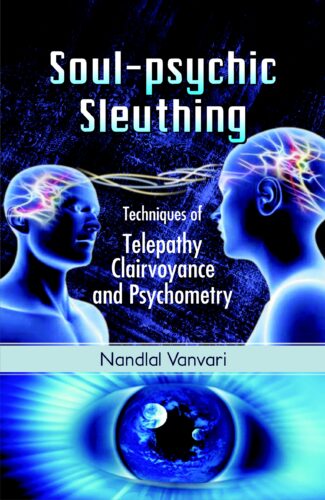
This book deals extensively with the sleuthing techniques of telepathy, clairvoyance and psychometry. When soul-psychic sluething is applied extensively, it will minimize troubles and traumas, corruption, and terrorism in the civilized societies. It incorporates the views of Taoist and Confucius, and of the modern psychologists giving a new dimension to soul-psychic sluething.
Soul-psychic Sleuthing will help us bring peace, harmony and welfare of society we live in. When it will be applied extensively, it will minimize troubles and traumas, corruption, and terrorism in the so-called civilized societies.
The Hindu scriptures talked of atma-manthan (soul-churning) because it is only atma, i.e. soul which being one with the Universal Consciousness, knows the truth, which in turn can reach the best solution. Truth shall win. This enforces the application of the Soul-psychic Sleuthing.
There are many techniques of the soul-psychic sleuthing. However, this book concentrates only on three of these telepathy, clairvoyance, and psychometry. Based on Taoist and Confucius wisdom texts, and the views of the modern psychologists, this study provides in detail the methods to develop these talents. Presenting the sleuthing practised by seers and mystics, psychic readers and trackers, telepathists, consultants in their areas and others, it delves into each of the three techniques in-depth.
The soul-psychic sleuthing needs reason, courage, majesty, morals, ethics, values and a tranquil mind besides the absolute purity of thought and intention.

This book deals extensively with the sleuthing techniques of telepathy, clairvoyance and psychometry. When soul-psychic sluething is applied extensively, it will minimize troubles and traumas, corruption, and terrorism in the civilized societies. It incorporates the views of Taoist and Confucius, and of the modern psychologists giving a new dimension to soul-psychic sluething.
Soul-psychic Sleuthing will help us bring peace, harmony and welfare of society we live in. When it will be applied extensively, it will minimize troubles and traumas, corruption, and terrorism in the so-called civilized societies.
The Hindu scriptures talked of atma-manthan (soul-churning) because it is only atma, i.e. soul which being one with the Universal Consciousness, knows the truth, which in turn can reach the best solution. Truth shall win. This enforces the application of the Soul-psychic Sleuthing.
There are many techniques of the soul-psychic sleuthing. However, this book concentrates only on three of these telepathy, clairvoyance, and psychometry. Based on Taoist and Confucius wisdom texts, and the views of the modern psychologists, this study provides in detail the methods to develop these talents. Presenting the sleuthing practised by seers and mystics, psychic readers and trackers, telepathists, consultants in their areas and others, it delves into each of the three techniques in-depth.
The soul-psychic sleuthing needs reason, courage, majesty, morals, ethics, values and a tranquil mind besides the absolute purity of thought and intention.
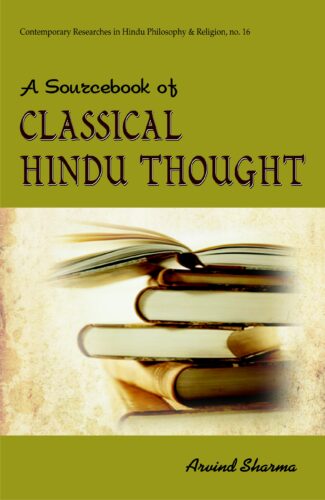
The book aims at familiarizing the readers with classical Hindu thought as enshrined in its foundational scriptures, the Vedas, for the information they provide on basic Hindu concepts relevant to the interests of students and scholars.
This volume presents material drawn from the classical Hindu texts, as well as other sources, to familiarize readers with the outlines of classical Hindu thought. It provides a bunch of readings organized around certain set concepts, quarried from Hindu religious texts of the past. It discusses material from classical Hindu texts relating to the themes of the divine realm such a brahman, devi, ishvara, trimurti, and so on, as well as of the mundane realm, such as jiva, samsara, karma, dharma, and so on. It also covers the concepts which link the two realms, such as those of maya, and the overcoming of it through yoga, to attain moksha. Some selections also throw light on what classical Hinduism has to say about the human being as a social being, through such concepts as varna, ashrama, and the purusharthas.
The volume would be of interest to all students and scholars of Hinduism, and particularly those interested in exploring Hindu philosophy and theology.
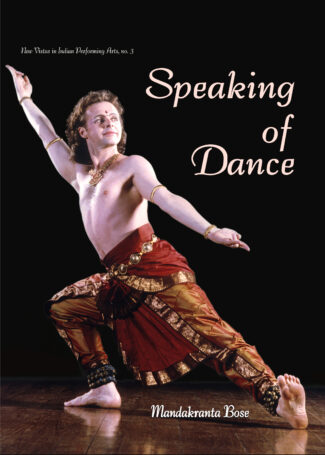
The book presents a fresh, critical appraisal of the key concepts surfacing from the Natyasastra of Bharata Muni and some of the other landmark treatises, like Abhinayadarpana, Sangitaratnakara, and Nartana-nirnaya to show how these time-honoured writings have contributed to the evolution of classical dancing in India.
Indian classical dance is a high art. In ancient India, it was even venerated as a sacred act. Ever since Bharata wrote his seminal Natyashastra (c. 200 ce), it has been one of the central elements of scholarly discourse, generating a whole host of learned treatises. Mandakranta Bose here takes a close look at this vast Sanskritic textual corpus attempting not only to reconstruct India’s two-millennia-long dance tradition, but also to dispel the historical and aesthetic misconceptions woven around it. With a fresh, critical appraisal of the key concepts surfacing from the Natyashastra of Bharata Muni and some of the other landmark treatises, like Abhinayadarpana, Sangitaratnakara, and Nartananirnaya, the book tries to highlight how these time-honoured writings have contributed to the evolution of classical dancing in India. And, yet more significantly perhaps, the author ventures into a comparatively uncharted terrain seeking to explore the status of performing arts (including dance) in early Jaina tradition. Focussing on the position of dancing in the contemporary cultural life of India, Mandakranta Bose shows how classical dance in India today has achieved a creative blend of tradition and modernity, leading to a vigorous revival of a great heritage, a part of the larger effort towards nationalist rediscovery. Supporting the text with visual material to correlate the theory and practice of dancing in India, the book offers perceptions that will appeal to everyone involved with performing arts.
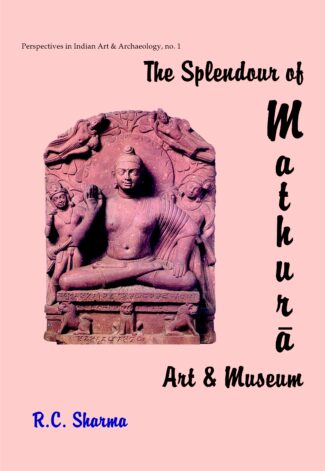
The book presents various stages of development of Mathura art from its earliest times and, in the process, gives a valuable account of the archaeological explorations and expeditions in the region since 1836.
It is a treasure document enlightening the various stages of development of Mathura art from its earliest times. Introducing the socio-cultural background from the pre-historic times it furnishes a valuable account of the archaeological explorations and expeditions in the region since the first antiquity saw the light of the day in 1836. Indigenous by birth, the Mathura School of Art flourished on the banks of Yamuna, reached its pinnacle under the Kushana patronage, continued in the Gupta age followed by Medieval times, thus dominating the entire Northern India for more than five centuries leaving behind imprints to be followed by the succeeding art styles. The type of stone and style changed with time and it did get influenced by its contemporary School of Gandhara once, but its exclusiveness remained down the ages. Beside the analytical assessment of the folk art tradition of early terracottas and yaksha cult, Dr. Sharma brings to light for the first time the salient features of the evolution and development of Mathura sculptures on various themes including Jaina, Buddhist and Brahmanical. The book is an uptodate document of new researches, fresh arrivals and latest reorganisation of the Museums galleries. The coloured and black & white illustrations in this book speak of the display of rich Mathura art in the Museum. The Index to the Exhibits will facilitate in spotting the description of a specific object quickly. Important sites have been located on the City and District maps and situation of galleries and ancillary units of the Museum can be found on the Gallery Plan. While the visitors will find the book a very remunerative companion during the Museum round the scholars will equally be benefitted through the prolific research material it reveals.
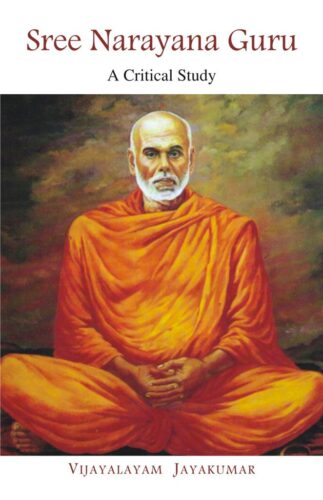
The book reconstructs the life of the legendary saint-reformer, Sree Narayana Guru and the entire scenario of his activity covering a century of Keralas history. It focuses on his life, historical background, socio-cultural milieu, spirituality, etc.
It is a holistic, at once compelling account of a saint-reformer of modern Kerala: Sree Narayana Guru (1856-1928). Veritably a versatile genius: a sage, philosopher, poet and social revolutionary, all rolled into one, Gurudeva was a perfect, though largely inscrutable, human being who, like Svami Ramakrishna Paramahamsa, created new tracts of his own in the realms of Indian philosophy. And invested temporal life, in any form, with an air of spirituality about him as is reflected, for instance, in his crusades against caste discriminations in Kerala or in his larger concerns with peace, universal brother-hood and co-existence. Dr. Jayakumars profile of this great guru focusses on his life, historical background, socio-cultural milieu, spirituality, philosophy, poetic genius, social reforms, humour, legacy and all else that one would possibly want to know about Sree Narayana Guru. Markedly different from the sofar-published studies on him, this book becomes the first ever to incorporate the English versions of Narayana Gurus verses: in both Malayalam and Sanskrit, together with their streamlined annota-tions and lucidly-written, insightful discussions. Which, in turn, also bring out Jayakumars remarkable critical acumen in highlighting the essential meaning, philosophical import and spiritual intensity of Gurudevas poetry. A work of epical grandeur, developed from years of the authors serious, persevered research, the book reconstructs not just the life-story of a legendary saint, but also the entire scenario of his activity covering over a century of Keralas social, spiritual and literary history.

The book studies the contributions of some of the illustrious persons like Rammohan Roy, Gandhi, Tagore, Gokhale and Satish Chandra to the socio-cultural and spiritual life of late eighteenth to nineteenth century, and aims at situating Sri Aurobindo’s thoughts vis- -vis those of his contemporaries.
The period spanning the latter half of the eighteenth century and the nineteenth century in India was marked by a reawakened national spirit to reinterpret Indian traditional values in modern light. This book, comprising deliberations presented at a national seminar, discusses some of the illustrious persons of that period who by their ideas and actions enriched the socio-cultural and spiritual life of the period. Researchers study the period of Sri Aurobindo, his contributions as well as those of his contemporaries including Raja Rammohan Roy, Mahatma Gandhi, Tagore, Gokhale and Satish Chandra. The aim is to situate Sri Aurobindo’s thoughts in its socio-cultural background and study the contributions of his contemporaries to bring out the distinctiveness of Sri Aurobindo. The essays deal with Sri Aurobindo’s philosophy of nationalism, his view of Indian renaissance and Ireland’s national and cultural renaissance and his attitude towards national education. They take up interpretations of violence and non-violence by Sri Aurobindo and Mahatma Gandhi, Vivekananda’s outlook about morality, caste system and dharma, and response of Aurobindo, Tilak and Gokhale to Western imperialism. An interesting effort is made to compare the thoughts of Sri Aurobindo and Tagore towards the revolutionary movement and reveal Aurobindo’s perception of Tagore’s poetry. The book will be useful to historians, political and social thinkers, besides the general readers.
| There are no products |